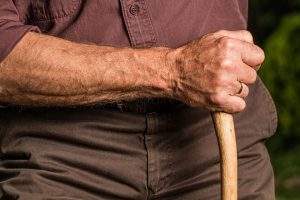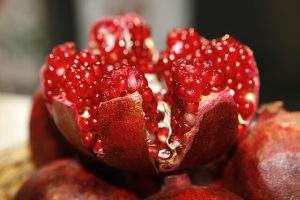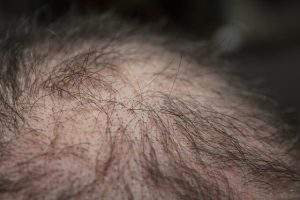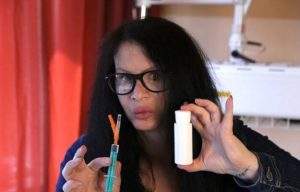Anti-Aging Update: Innovations & Oddities
Every so often, we like to take a look around to see what’s new in the world of anti-aging personal care products and science. There’s a constant stream of new formulations, research, products and more, and it’s exciting to witness what’s happening.
Sometimes, though, it seems as though events are pushing the boundaries of credibility–or common sense. But you decide.

A common antioxidant with uncommon benefits?
Researchers at the University of Maryland have found that methylene blue, a common antioxidant that’s usually employed as a dye in chemical processes, has striking efficacy in slowing the signs of aging. Even more impressive, it actually may reverse some of aging’s effects on the skin.
The scientists applied methylene blue to skin cells collected from three groups: healthy middle-aged people, donors over 80, and individuals who were technically young but suffered from progeria, the condition that makes bodies age faster than is normal. Plus, the chemical was applied to lab-grown artificial skin layered to mimic the structures of natural skin.
The results? The chemical’s antioxidant effects helped all of the skin cells resist DNA damage from oxidants like reactive oxygen species (ROS), which injure cellular structures like fibroblast DNA. Moreover, the artificial skin layers retained more water and actually grew thicker, characteristics associated with young skin.
“The effects we are seeing are not temporary. Methylene blue appears to make fundamental, long-term changes to skin cells,” senior researcher Kan Cao said in a statement. The implications for personal care products? Methylene blue could become a key weapon in formulator’s anti-aging arsenal.

Neutraceuticals become (literally!) more fruitful for anti-aging
Fruits are becoming more and more popular as nutraceutical ingredients, thanks to the anti-aging qualities they offer. Some of the applications they’re seeing include…
- Using mangiferin, a compound derived from mango, to deliver cytoprotective and antioxidant action against UVB-induced skin aging and DNA damage from radiation.
- Apples and oranges are being used as anti-aging nutraceutical ingredient, which may give new meaning to the old saying about “an apple a day…” Will it keep the plastic surgeon away?
- Resvertatrol and grape seed oil are being used, as they fight skin aging and hyperpigmentation.
- A flavanone found in citrus and tomatoes, naringenin, had been found to have anti-aging effects on myocardial cells.
- Cranberry seed oil is rich in antioxidants and is also witnessing increasing demand for anti-aging and skincare products.
- Maclurin and iriflophenone, bioactive compounds found in mango peels, deliver UV absorption, skin brightening, and other anti-aging benefits.
Developing regions are driving much of the growth in anti-aging nutraceutical ingredients, especially in the Asia-Pacific area. By the end of 2020, China is projected to surpass the U.S. in consumption of those ingredients, as more affluence makes anti-aging regimens an everyday pursuit, not a luxury for the few.

New hope for restoring hair, and then hanging onto it
Nobody is forgetting about another aspect of aging that plagues us, and that’s the retreat of the hairline with the passing years. Hair loss affects 40 million men and 21 million women in the U.S., but less than 7 percent of them seek out any sort of treatment. Why? Because it seems a losing battle. Now, though, a San Diego-based biomedical firm may be offering new hope. And new hair.
The company, Histogen, reports that recent studies have shown its injectable Hair Stimulating Complex (HSC) has successfully regrown hair in test subjects. In two clinical trials with male patients, hair count increased up to 60 percent twelve weeks after treatment, and 120 percent after a year. Another trial on women produced equally glowing (or is that flowing?) outcomes.
HSC is composed of human growth factors like proteins and other molecules usually secreted by human fibroblast cells, but grown in a laboratory culture. According to the firm’s founder/CEO, Gail Naughton, an even more significant fact is that the treatment has had lasting effects in 85 percent of patients–meaning their newgrown hair hasn’t fallen out.
Other popular current treatments like finasteride (Propecia) or monoxidil (Rogaine) have to be used daily to preserve the, uh, pelt. Histogen’s next step is to conduct more research before commercialization.

German actress injects herself with prehistoric bacteria
Makes perfect sense to us: To fight aging, inject yourself with bacteria that’s 3.5 million years old, discovered in Siberian permafrost.
“Wait,” you might think. “What?” So did we.
A 45-year-old actress from Munich, Germany, has spent the last three months dosing herself with an “extract of Bacillus F,” injecting it straight into her bloodstream. Why? Because the scientists who decrypted its DNA code claim it shows no signs of aging, unlike most cells, and “believe it could hold the key to unlocking improved human health and longevity.”
According to the actress, who goes by the name Manoush and who has already dropped about $49,000 on over 40 cosmetic surgery procedures in the past 20 years, “My skin is as soft as a baby’s bottom. You can’t really see it in the photos but if you see me in person you can see there are no marks or blemishes.
She obtained the Bacillus F samples from Doctor Anatoli Brouchkov, head of the Geocryology Department at Moscow State University, who claimed,“These microorganisms have some kind of amazing mechanism of survival which keeps them alive for millions of years. Just imagine if we were able to use it and prolong our lives for thousands of years.”
He also said he’d advised her not to inject herself with the bacteria, though he didn’t explain why he’d given her the samples in the first place.
Doctors! What do they know?
